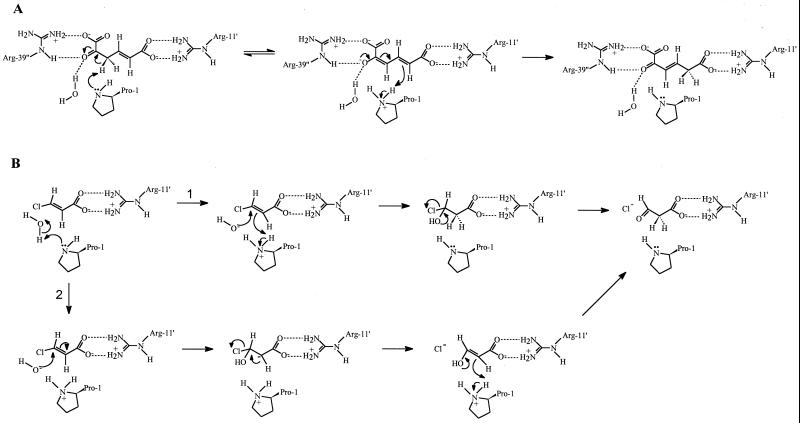FIG. 2.
Comparative reaction scheme for 4-OT and CaaD. The primed residues come from other subunits. (A) Reaction catalyzed by 4-OT (adopted from references 10 and 41). (B) Two proposed reaction schemes for CaaD, one involving the formation of 3-chloro-3-hydroxypropanoic acid (route 1) and the other involving the formation of a carbanion intermediate (route 2). Pro-1 is shown as the catalytic base to activate a water molecule that attacks the substrate. Arg-11 is implicated in substrate binding.

